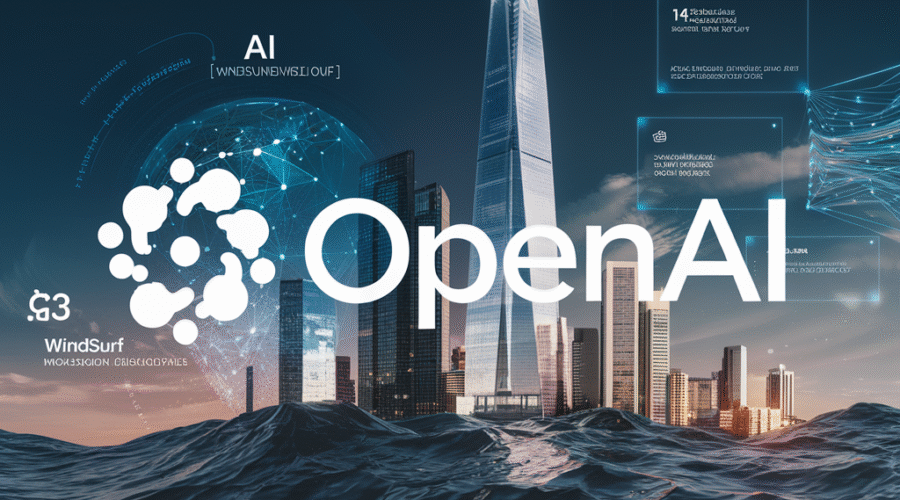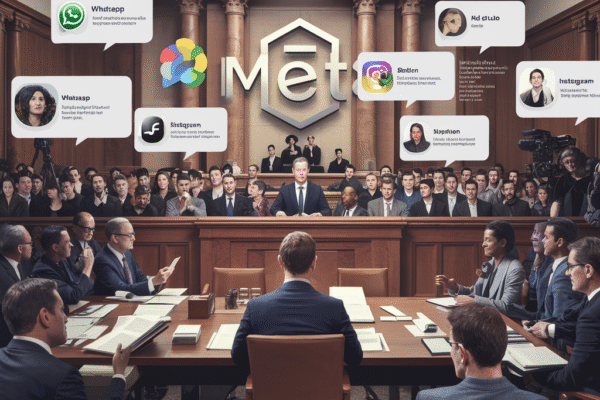In a move that could reshape the competitive dynamics of the AI-powered software development sector, OpenAI is negotiating to acquire coding assistant startup Windsurf (formerly Codeium) for approximately $3 billion[1][2][3]. This potential transaction – which would represent OpenAI’s largest acquisition to date – comes just weeks after the company secured a record $40 billion funding round at a $300 billion valuation[2][4]. The deal underscores the intensifying arms race among AI leaders to dominate next-generation developer tools while raising critical questions about market consolidation and the future of human-machine collaboration in software engineering.
Strategic Rationale and Competitive Positioning
Accelerating the AI Coding Arms Race
OpenAI’s pursuit of Windsurf reflects a calculated response to several converging market forces. With Microsoft’s GitHub Copilot boasting over 1.8 million paid users and Anthropic’s Claude Code demonstrating rapid adoption[4][7], the acquisition would immediately elevate OpenAI’s capabilities in a market projected to reach $15 billion in annual revenue by 2026[5][8]. Windsurf’s differentiated architecture – which deeply integrates AI throughout the coding workflow rather than relying on bolt-on extensions – provides OpenAI with proprietary technology that could leapfrog existing solutions[7][8].
Synergy Potential with OpenAI’s Technology Stack
The integration of Windsurf’s context-aware coding environment with OpenAI’s newly launched o3 and o4-mini models creates compelling technical synergies[4][7]. Early benchmarks show the o3 model achieving state-of-the-art performance on the SWE-bench coding evaluation, solving 78.9% of real-world GitHub issues compared to Claude Code’s 72.1%[4][7]. When combined with Windsurf’s developer-centric interface, this could enable what former OpenAI researcher Andrej Karpathy has termed “vibe coding” – rapid prototyping through natural language instructions[4][7].
Financial and Structural Considerations
Valuation Dynamics and Funding Context
The proposed $3 billion price tag represents a 140% premium over Windsurf’s $1.25 billion valuation from its 2023 Series C round led by General Catalyst[1][5][8]. However, this premium appears justified given Windsurf’s reported annual recurring revenue (ARR) growth from $40 million to an estimated $150 million over the past 18 months[4][7]. The deal structure likely combines cash and stock, leveraging OpenAI’s recent $300 billion valuation to minimize dilution[2][4].
Investor Implications and Cap Table Complexities
Windsurf’s investor base – including Kleiner Perkins, General Catalyst, and Founders Fund – stands to realize substantial returns despite the compressed timeline from founding to exit[4][5][8]. However, the acquisition creates potential conflicts with OpenAI’s Startup Fund, which previously invested in competing code assistant Cursor[4][7]. This dual positioning raises questions about OpenAI’s ability to maintain ecosystem neutrality while vertically integrating key developer tools.
Market Impact and Competitive Response
Redrawing the Competitive Landscape
The acquisition would immediately position OpenAI as a full-stack AI development platform provider, competing directly with Microsoft’s GitHub Copilot and Google’s Project IDX[4][7][8]. Of particular concern to competitors is Windsurf’s growing enterprise traction – the platform reportedly counts 12 Fortune 500 companies as clients, including major financial institutions implementing AI-driven legacy system modernization[5][8].
Potential Regulatory Scrutiny
With OpenAI’s valuation now exceeding $300 billion and Microsoft maintaining a 49% stake, antitrust regulators may scrutinize the deal’s impact on market concentration[2][4][7]. The European Commission’s recent investigation into Microsoft’s GitHub acquisition provides a potential regulatory playbook, focusing on access to training data and interoperability requirements[8].
Implementation Challenges and Integration Risks
Technical Integration Complexities
While Windsurf currently leverages OpenAI’s API for certain features, full integration requires reconciling different architectural paradigms[4][7]. The challenge lies in maintaining Windsurf’s real-time collaboration capabilities while scaling its infrastructure to support OpenAI’s global user base. Historical precedents like GitHub’s acquisition by Microsoft suggest a 12-18 month integration timeline for comparable deals[7][8].
Developer Ecosystem Concerns
OpenAI must navigate community concerns about Windsurf’s future pricing and accessibility. The platform’s popular free tier – used by over 850,000 developers[7][8] – risks being deprioritized in favor of enterprise-focused monetization. This tension mirrors challenges faced by MongoDB when shifting to a SaaS model, where balancing community growth with revenue targets proved critical[8].
Leadership and Cultural Considerations
Retaining Windsurf’s Talent
The acquisition’s success hinges on retaining Windsurf’s 85-person engineering team, particularly founders Varun Mohan and Douglas Chen[4][5][8]. OpenAI’s track record with previous acquisitions like Rockset suggests a pattern of product integration followed by team absorption into core AI research[7][8]. However, Windsurf’s go-to-market leadership may require greater autonomy given the differentiated nature of their developer platform.
Cultural Integration Challenges
Aligning Windsurf’s rapid iteration culture with OpenAI’s research-first approach presents non-trivial challenges. The startup’s weekly release cadence contrasts with OpenAI’s more deliberate model development cycle[4][7]. Successful integration may require creating semi-autonomous business units, similar to Google’s approach with DeepMind and its other AI divisions[8].
Future Outlook and Industry Implications
Accelerating AI-First Development Paradigms
The acquisition signals broader industry shifts toward AI-native development environments. Gartner predicts that by 2027, 60% of new application code will be AI-generated, up from less than 10% in 2024[8]. Windsurf’s technology could enable OpenAI to capture early leadership in this transition, particularly in complex domains like quantum computing simulation and blockchain smart contract generation[4][7].
Potential Competitive Responses
Market rivals are likely to respond through both organic investment and strategic acquisitions. Microsoft could accelerate integration between GitHub Copilot and its Azure AI services, while Google might fast-track Project IDX’s public launch[7][8]. Smaller players like Replit and Anysphere may seek partnerships with cloud providers or explore SPAC mergers to maintain competitiveness[4][8].
Conclusion: A Pivotal Moment in AI Evolution
The potential Windsurf acquisition represents more than a routine technology purchase – it embodies the intensifying battle for dominance in AI’s application layer. For enterprise technology leaders, this deal underscores the urgency of developing comprehensive AI adoption strategies that balance vendor partnerships with in-house capabilities. As the lines between AI research and commercial application continue to blur, OpenAI’s move may catalyze a new wave of consolidation in the developer tools space, ultimately reshaping how software is conceived, built, and maintained in the AI era.
Sources
https://www.pymnts.com/cpi-posts/openai-in-advanced-talks-to-acquire-ai-coding-tool-windsurf-for-3-billion/, https://www.deccanchronicle.com/technology/openai-in-talks-to-acquire-ai-coding-tool-windsurf-for-3-billion-report-1873378, https://www.pymnts.com/artificial-intelligence-2/2025/report-openai-in-talks-to-acquire-ai-powered-coding-tool-windsurf/, https://theoutpost.ai/news-story/open-ai-in-talks-to-acquire-ai-coding-startup-windsurf-for-3-billion-14422/, https://techstartups.com/2025/04/16/openai-in-talks-to-buy-coding-assistant-startup-windsurf-for-3-billion/, https://www.aibase.com/news/17234, https://www.neowin.net/news/openai-eyes-3-billion-acquisition-of-windsurf-a-powerful-ai-code-editor/, https://www.cosmico.org/openai-nears-3-billion-windsurf-acquisition/





